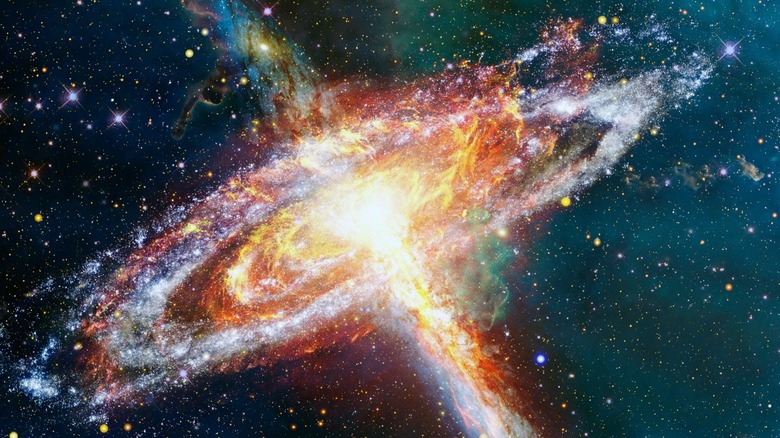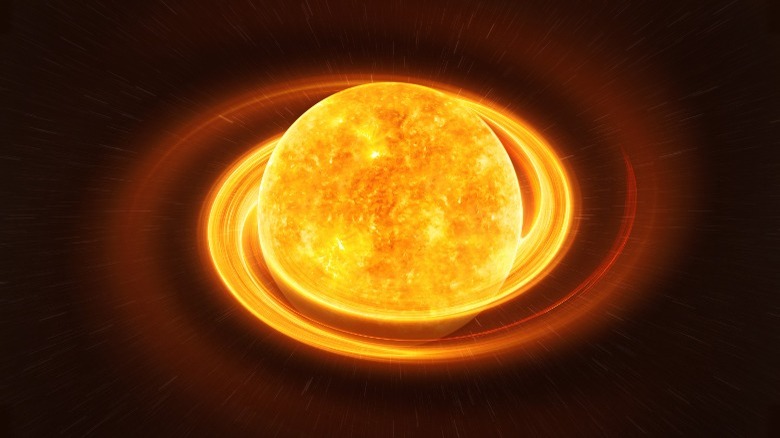Researchers Detected A Bizarre Frequency From A Billion Light Years Away
The journal Nature published a study this week detailing an unprecedented astronomical discovery. The article, written by a team from the Massachusetts Institute of Technology, explained how a Canadian observatory recorded an unusual fast radio burst on December 21, 2019. The Dominion Radio Astrophysical Observatory, in British Columbia, is home to the Canadian Hydrogen Intensity Mapping Experiment, or CHIME (via CNN). According to MIT News, CHIME detects radio waves emitted by hydrogen from some of the oldest parts of the universe. It also observes fast radio bursts (FRBs).
According to CNN, FRBs are millisecond-long emissions of radio waves. Generally, their origins are unknown. These bursts are extremely bright (via MIT News). Only about 10% of FRBs repeat; in other words, most are only detected once. Very few also have observable patterns. They're difficult to spot because they're so quick and unexpected (via CNN). The first FRB was observed in 2007, and hundreds have been recorded since then.
Properties of the 2019 FRB
The 2019 FRB was noticed by Daniele Michilli at CHIME (facility pictured). Michilli was then a researcher at McGill University in Canada and is now a postdoctoral researcher at MIT (via MIT News). These radio waves came from roughly one billion light-years away from Earth. However, the MIT team that published these findings still aren't sure exactly which galaxy the FRB came from or what caused it.
It was unusual in that it lasted around three seconds, which is 1,000 times longer than most FRBs. In fact, it's the longest one recorded so far. Michilli described the signal as having "periodic peaks," giving it a rhythm similar to a heartbeat (via CNN). These peaks came about every 0.2 seconds, according to MIT News. It was also clearer than most detected FRB emissions. It was over a million times brighter than similar FRBs from our galaxy.
However, the researchers were able to hypothesize about the star emitting this signal by comparing it to signals from our galaxy. They think it probably came from a neutron star, which is the spinning core remnants of dead giant stars (via MIT News). There are two types of neutron stars: magnetars and radio pulsars. Magnetars have strong magnetic fields, whereas radio pulsars emit bursts of radio waves as they turn. This FRB could have come from either type, according to CNN, although it was stronger than most signals from these types of stars.
Future research possibilities with FRBs
The MIT team further hypothesized that the signal could have come from within a "turbulent" plasma cloud, which according to The Free Dictionary is a group of electrically charged particles found in a solar wind. And, although this FRB was extremely bright, the researchers think the star it comes from probably isn't always so brilliant but emitted some unusually bright bursts that day.
The MIT team hopes to detect more signals from this star in the future, according to MIT News. Although they don't know exactly where it is, they expect future technology to be able to determine an FRB's location. Newer telescopes will also be able to detect FRBs more frequently (via CNN).
MIT News says the researchers think that future signals from this star could help them calculate the rate at which the universe is expanding based on the frequency of the bursts and the way they change as the star moves farther away from Earth.


